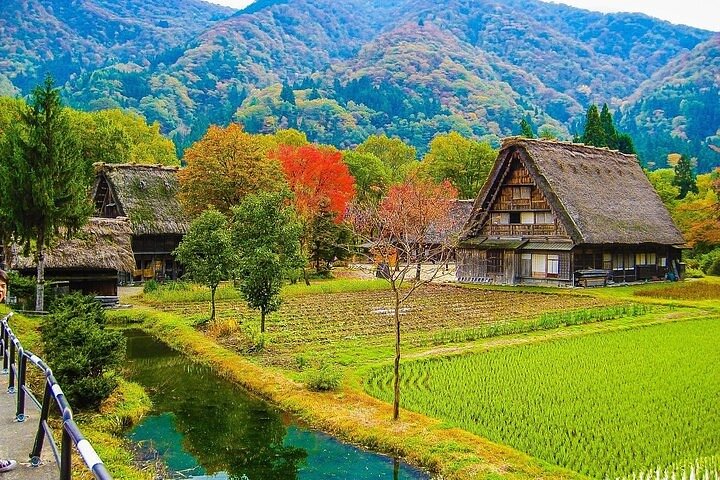Shirakawago and Takayama 2 Days Tour from Osaka or Kyoto
Share this tour

Offered languages
- English
This 2-day itinerary allows travelers to soak up the sights of both popular destinations without the rush or crowded tours. A guide points out local specialties along the traditional food street and explains the significance of the gassho-style (thatched-roof) homes in well-preserved Shirakawago.
Visit the best parts of Takayama and Shirakawago on a private 2-day tour.
Learn about the history of Japanese traditional buildings at your leisure .
Personalized attention is guaranteed with a dedicated guide at your side .
Overnight accommodation, lunch, and transport from designated meeting points
What's Included
Meeting and pickup
Itinerary
-
1
8:00 : From Osaka to Takayama by train (Wide view-Hida 25)
4 hours 30 minutes • Admission ticket included -
2Kyoto Station
8:30 Departure from Kyoto by Train (Wide view- Hida 25)
4 hours • Admission ticket included -
3
Takayama (高山) is a city in the mountainous Hida region of Gifu Prefecture. To differentiate it from other places named Takayama, the city is also commonly referred to as Hida-Takayama. Takayama retains a traditional touch like few other Japanese cities, especially in its beautifully preserved old town. It now ranks as one of the prime candidates among travelers wishing to add a rural element into their itineraries.
1 hour • Admission ticket free -
4
The remote, mountainous areas of Shirakawa-go and Gokayama lie between Takayama and Kanazawa in north, central Japan. The villages of Ogimachi (Gifu Prefecture) and Ainokura and Suganuma (both in Toyama Prefecture) make up a UNESCO World Heritage site, famous for its many thatched A-frame buildings, built in a style of rustic architecture known as gassho-zukuri ("praying hands").
2 hours • Admission ticket free -
5
Takayama Ichiba Market (高山市場) is a district adjacent to the site of the former Takayama Wholesale Market. It consists of a few blocks of wholesale and retail shops, as well as restaurants crowded along narrow lanes. Here you can find fresh and processed seafood and produce alongside food-related goods such.
1 hour • Admission ticket free -
6
Because of its valuable timber resources, the Hida Region around Takayama was put under direct control of the Tokugawa Shogunate in 1692. The Takayama Jinya (高山陣屋) served as the local government office headed by the officials dispatched from Edo (present day Tokyo). The building complex was in official use until 1969, and is now open to the public as a museum. It includes various nicely maintained tatami mat rooms that once served as offices, conference rooms, guest rooms and residential space. There is also an interesting interrogation room.
1 hour • Admission ticket included -
7
Takayama's old town has been beautifully preserved with many buildings and whole streets of houses dating from the Edo Period (1600-1868), when the city thrived as a wealthy town of merchants. The southern half of the old town, especially the Sannomachi Street, survives in a particularly pretty state with many old homes, shops, coffee houses and sake breweries, some of which have been in business for centuries. The shops in the area are typically open daily from 9:00 to 17:00.
2 hours • Admission ticket free -
8
shopping time at Takayama ㈱高山名産館 After shopping 15:38 Departure from Takayama bus center (Wide View Hidan 36) 19:10 Arrival Kyoto 19:50 Arrival Osaka
30 minutes • Admission ticket free
From Osaka/Kyoto to Takayama
From Takayama to Kyoto/Osaka
Additional info
- Public transportation options are available nearby
- Suitable for all physical fitness levels
Tags
Cancellation Policy
All sales are final. No refund is available for cancellations.
Show more
Cancellation Policy
This experience is non-refundable and cannot be changed for any reason. If you cancel or ask for an amendment, the amount you paid will not be refunded.
- This experience requires a minimum number of travelers. If it’s canceled because the minimum isn’t met, you’ll be offered a different date/experience or a full refund.
- This experience requires good weather. If it’s canceled due to poor weather, you’ll be offered a different date or a full refund.
You will not receive a refund if you cancel.
Your guide to the flawless travel experience













